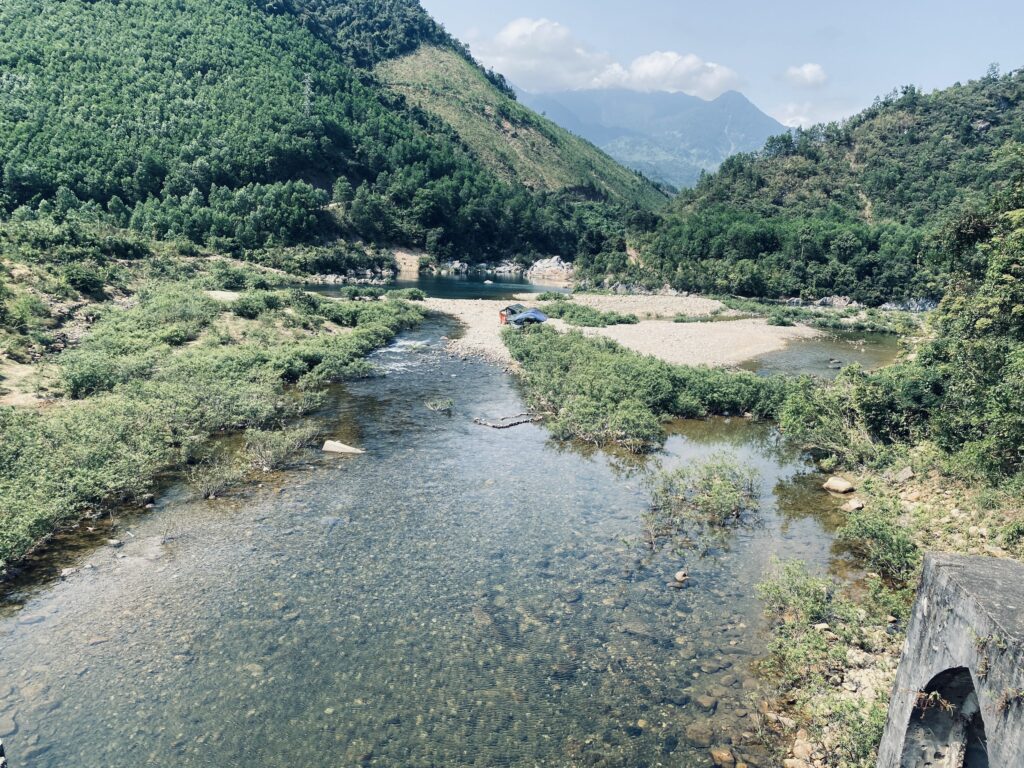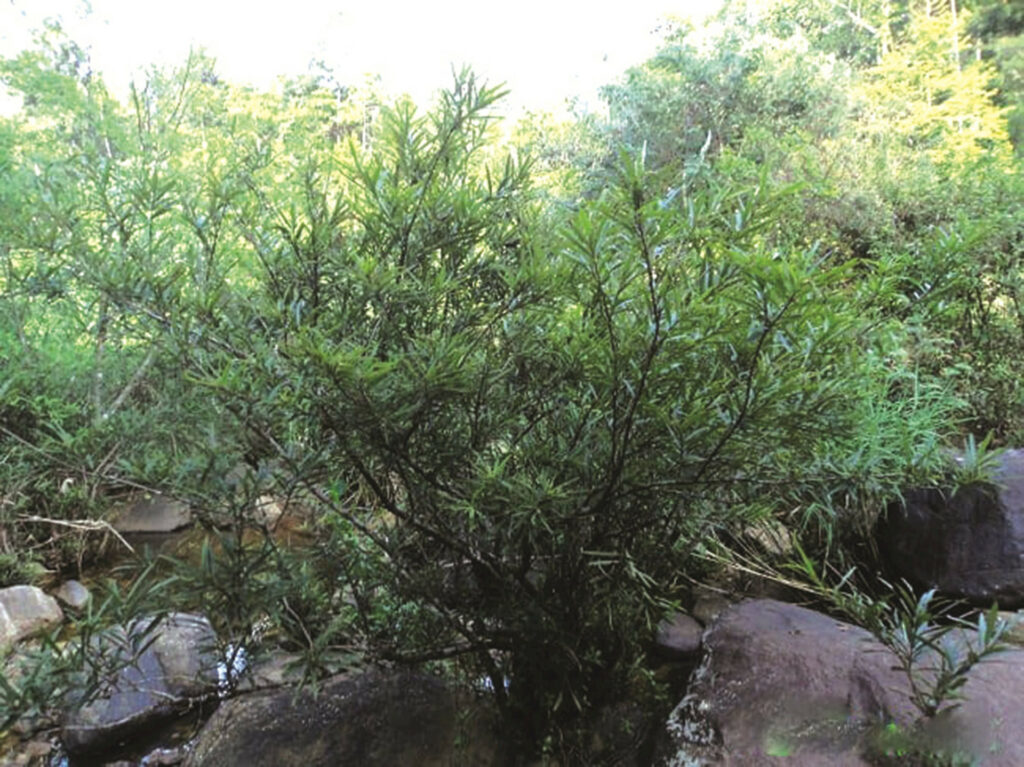If you’ve ever walked along the Cu De River or any nearby stream, you’ve probably seen a type of plant with long green leaves, flexible stems, growing in clusters on the ground or even in rock crevices.
This plant is called “Ru Ri.” Ru Ri belongs to the family of Euphorbiaceae plants, with several species known by different scientific names, but the most common is Homonoia riparia. This species has leaves arranged like bird feathers on a flat surface, and its fruit resembles the seed of rubber trees or the fruits of Amaranthus spinosus.

For the local people here, Ru Ri holds a special significance. I once had the opportunity to try a dish of bamboo-tube-cooked fish seasoned with Ru Ri leaves, introduced by a Co Tu young man. The fish was freshly caught from the stream, seasoned with a bit of salt and chili along with Ru Ri leaves, stuffed into bamboo tubes and cooked over a fire for about 15-20 minutes. We had a delicious lunch; the fish was fatty and savory, with a slight bitterness from the Ru Ri leaves that made the dish unique, unlike any fish dish I had tasted before. The Co Tu people often use bamboo tubes to cook various dishes; besides fish, there are also bamboo rice cooking and wild boar meat, which are equally delicious in a unique way. Since ancient times, bamboo tubes have been used on hunting trips in the forest, eliminating the need to carry pots and pans; all ingredients are readily available in nature, making the trips lighter and hunting more convenient.
To the local people, Ru Ri is not just a delicious wild vegetable but also a medicinal herb. Its leaves and roots are used to treat ailments such as headaches, sinusitis, joint pain, bloating, allergies, and more. Additionally, the plant is used in industry for dye production and as a detergent.

Ru Ri is a remarkably resilient plant, much like the local people here. From July, in the mountainous region, heavy rains cause streams and rivers to swell, becoming more ferocious. Living conditions for the mountain people become more challenging as they restrict outdoor activities for safety. Nature can be harsh, but the people here remain rooted to the land and forests, like the Ru Ri plants growing by the streams, resiliently enduring the fury of the rainy season, waiting for the waters to recede. Just as the plant and its people stand tall, they gather their pain, open their hearts to welcome the sunlight of a new season.
Even during hot summer months, when the sun burns the skin, Ru Ri continues to sprout new shoots. Its green color adorns the cool stream alongside rocks that have been there for thousands of years.

